
Affiliate Disclaimer: As an Amazon Associate, I earn from qualifying purchases. This comes at no extra cost to you and helps support this site.
Introduction
This guide will help you show you how to choose the right mobility aid for your needs in 2025.
Choosing the right mobility aid is one of the most important decisions a senior and their caregivers can make. The right device can mean the difference between frustration and freedom — it can improve safety, maintain independence, and support both physical and emotional health.
With so many options on the market in 2025 — from canes to walkers, wheelchairs, and mobility scooters — it’s easy to feel overwhelmed. This guide breaks down what to consider, how to evaluate your needs, and how to make a confident decision backed by professional recommendations.
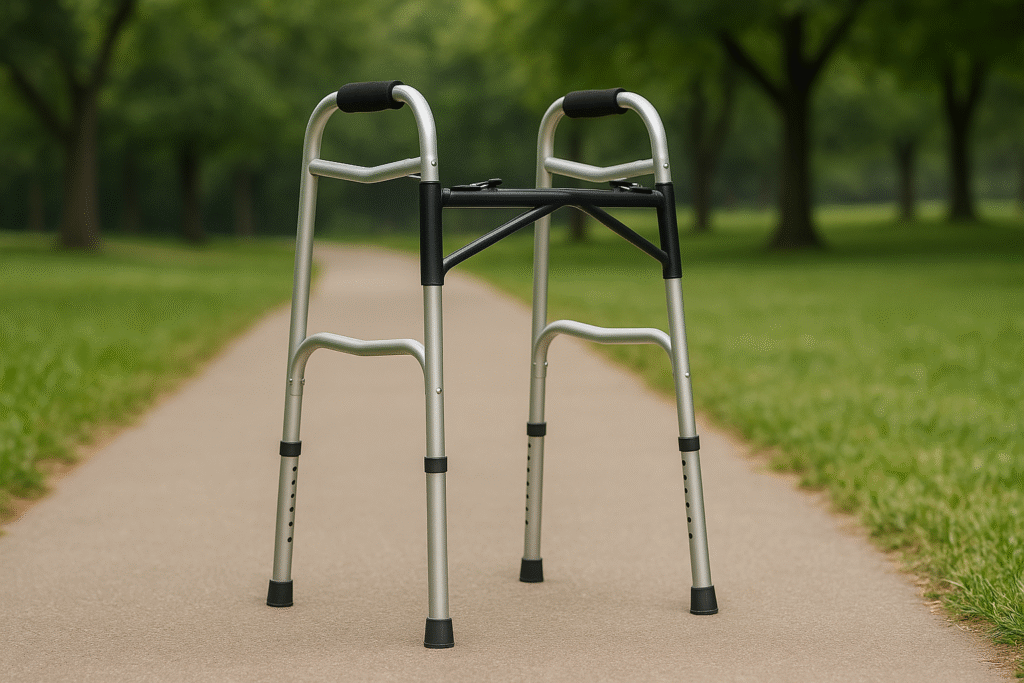
1. Understanding Mobility Needs
Before choosing a mobility aid, it’s important to assess your personal level of mobility and medical needs.
- Degree of support required: Some seniors may only need light stability for occasional outings, while others require daily assistance with every transfer.
- Underlying conditions: Chronic arthritis, stroke recovery, Parkinson’s disease, or balance disorders often call for more structured support than occasional dizziness or mild fatigue.
- Professional input: According to the CDC, more than 25% of seniors experience a fall each year. A physical therapist or healthcare provider can help determine which mobility aid provides the safest match.
- Caregiver role: If you are helping reposition or transfer a loved one, the aid must not only support the user but also reduce caregiver strain. For example, we’ve covered detailed techniques in our guide on How to Safely Reposition Seniors in Bed.
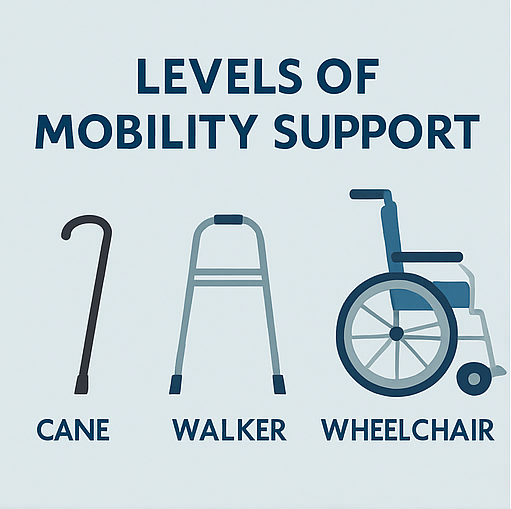
2. Key Factors to Consider When Choosing a Mobility Aid
When evaluating options, keep these practical considerations in mind:

- Home and outdoor environment: Tight hallways, rugs, or stairs at home may limit what kind of device is practical. Outdoor walkers and scooters need durable wheels, while narrow spaces may require slimmer frames.
- Body size and weight capacity: Aids are designed with different ranges in mind. Using a device outside its recommended capacity is unsafe and reduces its lifespan.
- Frequency of use: Daily, all-day support often requires a sturdier, more comfortable solution like a lightweight wheelchair, while occasional use may be met with a cane or rollator.
- Budget and coverage: Medicare may partially cover some equipment, but not all. Carefully weigh affordability against durability and warranty options.
- Future needs: Mobility often changes over time — investing in adjustable or modular aids can prevent frequent replacements.
For a deeper look at long-term comfort and skin safety, see our guide on Preventing Pressure Ulcers in Seniors.
3. Types of Mobility Aids and Who They’re Best For
a. Canes and Walking Sticks
- Best for mild balance issues or when just a little extra stability is needed.
- Affordable, portable, and easy to use, though they provide minimal weight support.
- Excellent as a first step in mobility support, but not a substitute for more advanced devices when conditions progress.
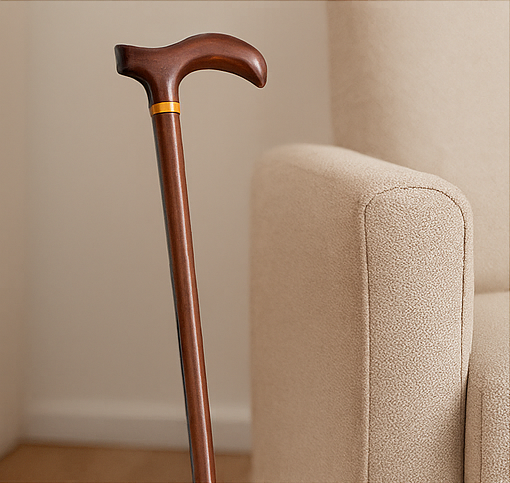
b. Walkers and Rollators
- Walkers offer strong support for seniors who tire quickly or have balance challenges.
- Rollators (walkers with wheels) are great for those who want stability plus the convenience of a seat and basket.
- Ideal for both indoor and outdoor use when chosen correctly.
- Learn more in our detailed guide: Best Walkers & Rollators for Seniors (2025 Guide).
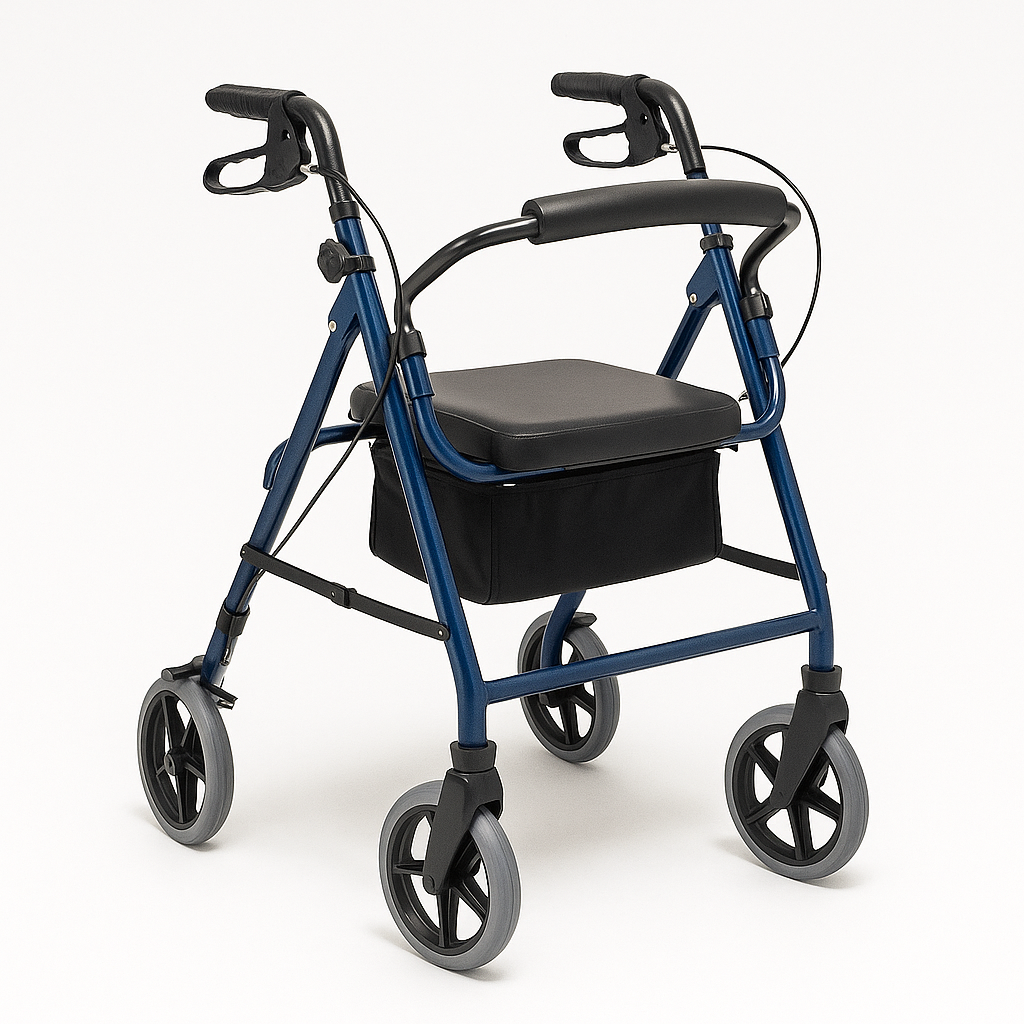
c. Wheelchairs (Manual, Lightweight, Transport)
- Manual wheelchairs are dependable for everyday use but can be tiring if self-propelled.
- Lightweight wheelchairs are easier for both seniors and caregivers to handle, making them excellent for active users.
- Transport chairs are intended for short-term use and caregiver-driven mobility.
- See our full breakdown in: Best Lightweight Wheelchairs for Seniors (2025 Guide).
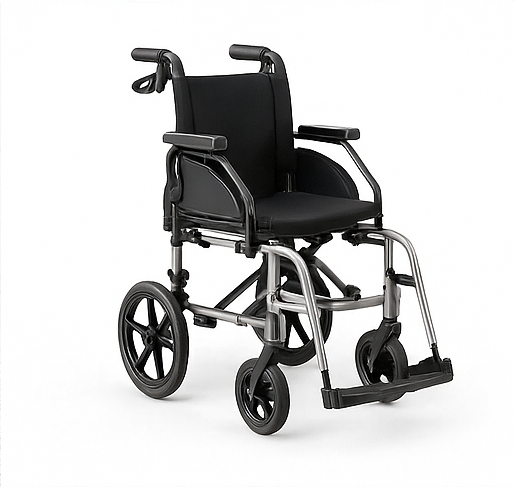
d. Mobility Scooters and Power Chairs
- Perfect for seniors who still enjoy independent outdoor activities but need powered assistance.
- Range, portability, and weight capacity vary significantly between models.
- Ideal for seniors with reduced walking endurance but adequate upper-body control.
- Stay tuned for our upcoming review: Best Mobility Scooters for Seniors (2025 Guide).
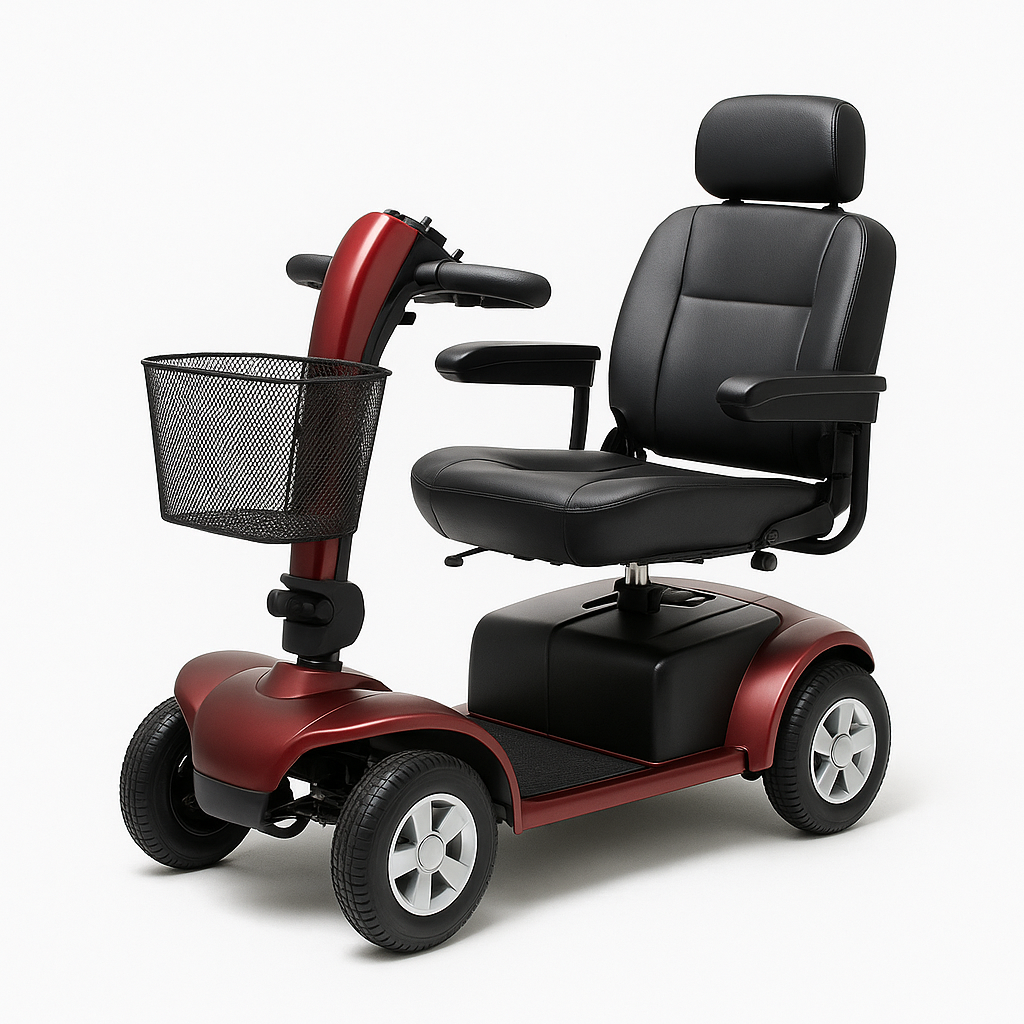
4. Practical Tips for Choosing Wisely
Choosing the right device is not only about the type but also about the details that affect daily use:
- Always test before buying: Comfort, handle height, turning radius, and stability can’t be judged by photos alone.
- Check warranty and return policies: A reputable manufacturer or seller will allow returns if the aid doesn’t meet safety expectations.
- Consider accessories: Wheelchair cushions, storage bags, trays, and non-slip grips can turn a basic product into a far more supportive system. For instance, see our guide on Best Wheelchair Cushions for Seniors.
- Seek professional evaluation: A licensed physical therapist can provide recommendations tailored to posture, strength, and home environment.
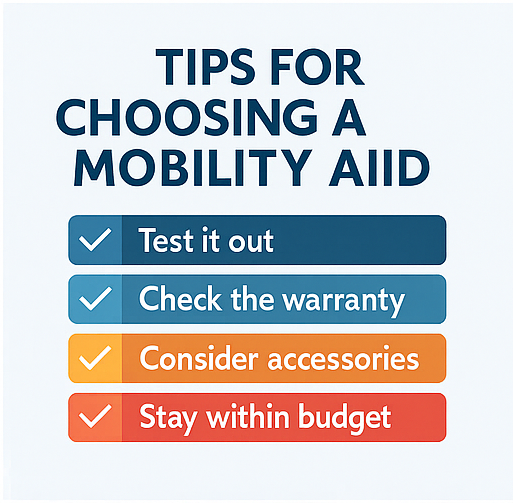
5. When to Upgrade or Change Mobility Aids
Mobility needs often evolve with age and medical conditions. Here are clear signals that it may be time to upgrade:
- Frequent falls or near-falls despite using the current aid.
- Fatigue or pain when using the device, suggesting it’s too heavy or unsupportive.
- Environment mismatch: For example, a senior who has transitioned from mostly indoor use to frequent outdoor trips may benefit from a rollator or scooter.
- Caregiver strain: If assisting with transfers is becoming unsafe or difficult, it may be time to consider a higher-support device like a wheelchair or patient lift.

Conclusion
The best mobility aid is not the most expensive or the most popular — it is the one that matches the user’s health, lifestyle, and goals. In 2025, seniors have more choices than ever, and with proper evaluation, the right tool can mean greater independence and fewer risks. Always involve a healthcare provider in the decision-making process, and remember that mobility aids should be adjusted as needs evolve.
Frequently Asked Questions about Choosing Mobility Aids
What is the easiest mobility aid for beginners?
Canes are typically the simplest starting point. They are lightweight, affordable, and help with mild balance issues without being overwhelming.
Can you use multiple mobility aids at once?
Yes. Many seniors use a cane for short trips and a rollator or wheelchair for longer outings. Matching the device to the activity ensures safety and prevents fatigue.
What’s the difference between a rollator and a walker?
A standard walker must be lifted and placed forward, while a rollator has wheels and is pushed. Rollators are easier outdoors but require more control.
How do I know when it’s time to switch to a wheelchair?
If walking even with a walker causes fatigue, frequent falls, or if independence is declining, it may be time to consider a lightweight or power wheelchair.
Medical Disclaimer: This article is for informational purposes only and is not a substitute for professional medical advice, diagnosis, or treatment. Always consult a qualified healthcare provider before making decisions about mobility aids or medical equipment.
